Southern Tamandua Profile
There are four major anteaters: the most famous is the shaggy giant anteater: terrestrial, hanging out in grasslands and rainforests; then there’s the silky anteater, spending all its life in the trees; the Northern Tamandua, who makes use of powerful hind limbs and a prehensile tail to navigate mangroves and cloud forests…
And the Southern Tamandua, or Lesser anteater, who does all of these things. They are a medium-sized anteater, native to South America, and the island of Trinidad in the Caribbean.
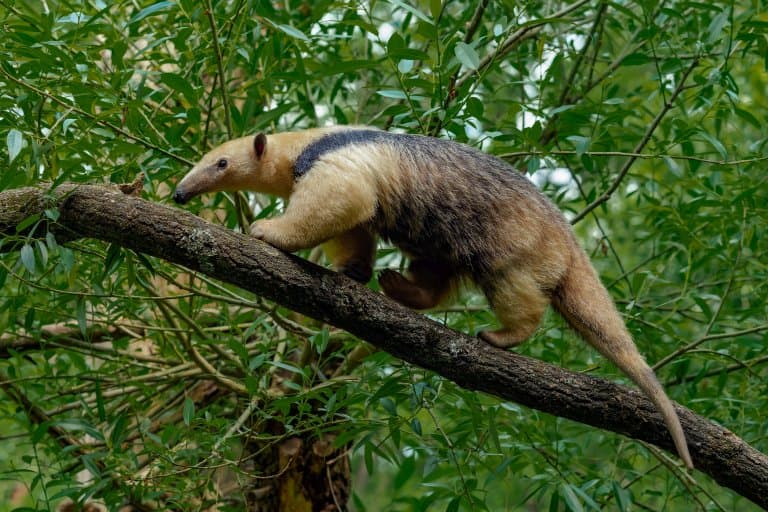
Southern Tamandua Facts Overview
| Habitat: | Diverse habitats from 0-2,000m |
| Location: | South America and Carribean |
| Lifespan: | 9.5 years in captivity |
| Size: | Over 1.3 meters long including tail |
| Weight: | Around 7kg in adults |
| Color: | Tan to black, sometimes with a collar or vest |
| Diet: | Eusocial insects like ants, termites and bees |
| Predators: | Harpy eagles and humans |
| Top Speed: | Slow |
| No. of Species: | 1 |
| Conservation Status: | Least Concern |
The Lesser anteater is the most widespread of all its order.
With claws much like a sloth and a prehensile tail, it’s well suited to the trees, but also spends time on the ground and in burrows. It occupies a vast and diverse range of habitats and makes sure to get a balanced diet of insects.
The lesser anteater is mainly nocturnal, but is sometimes active during the day. They spend a lot of their day foraging in the trees, and will nest in hollow tree trunks, or take burrows of other animals like armadillos.
While they’re spread out to distant lands, they’re also solitary and in low density, and don’t appear to have much of a social life outside of mating. However, they make good exhibits at zoos and have been used to assess animal welfare.
Interesting Southern Tamandua Facts
1. They have an impressive range!
These anteaters span a surprising range and can occupy a diverse spectrum of habitats. They’re found all the way from Trinidad to Southern Brazil, in areas as low as sea level to as high as 2km above.
They prefer areas near rivers and streams with thick vines and coverage, but they are also found in grasslands, savanna, and cactus sands. They occupy trees and spend time on the ground, sleeping both in the canopy and in burrows. 1
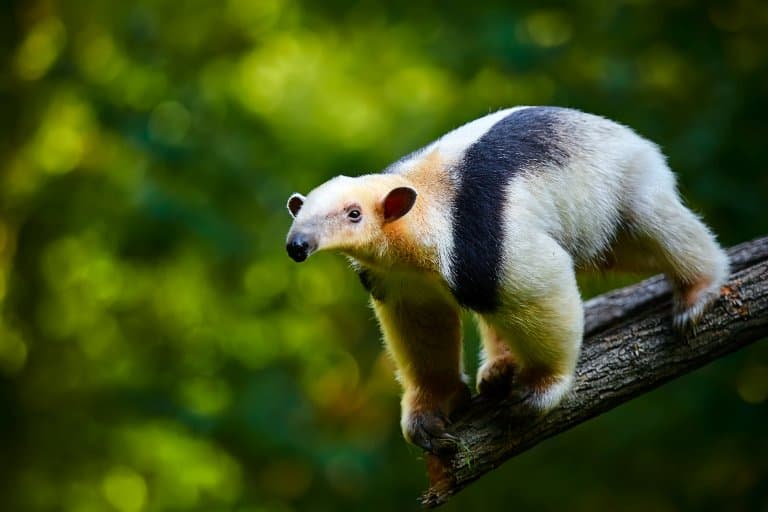
2. They have a prehensile tail
A tamandua’s tail is like a fifth limb and comes equipped with a gripping pad and full prehensility.
But it’s not only good for climbing; at the base of this tail lie a pair of special glands that can release a terrible smell.
This is used to ward off predators that get too close and works a lot like a skunk’s infamous defence. The emission is said to be musky and earthy and they are on our smelliest animals in the world list.
If standing upright, the tail acts as a stabiliser. It can also hold the animal’s entire body from a branch, with help from the hind limbs, freeing up its clawed hands for fighting, when necessary.
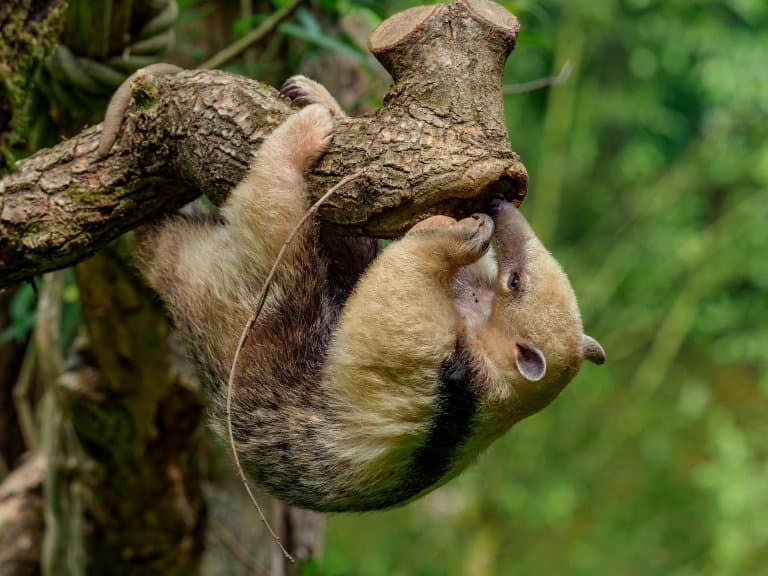
3. It has enormous claws
Tamanduas have very large claws both on their front and rear feet. These large, powerful, and curved claws are so large these anteaters have to walk with them at an angle to avoid tripping them up.
This encumberment does make them a little clumsy on the ground, but allows for the elegant traversing of vines and branches, and easy access to any tough termite mound or beehive they may take a liking to.
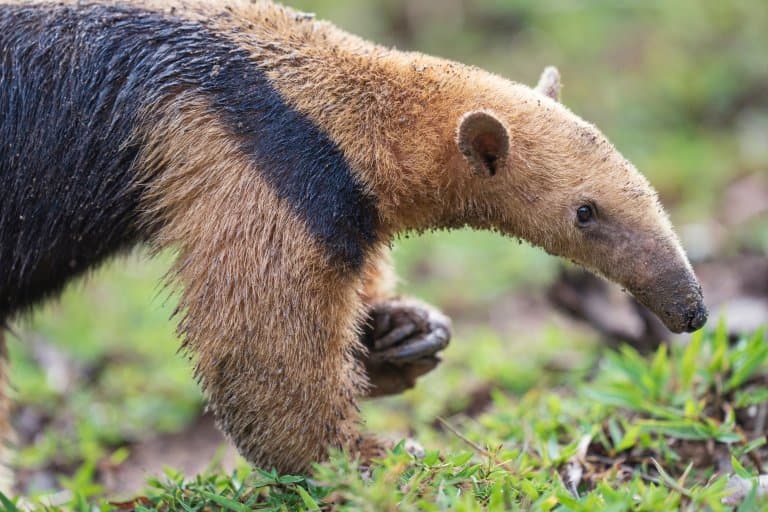
4. And a snout designed for ant-eating
Their jaws are fused and toothless, acting more like a straw to suck up ants and termites. They use this to get through thousands of critters a day, with the help of an exceptionally long barbed tongue.
This snout is curved downward and opens only at the end like a straw. This tongue acts like a 40cm sticky probe, projecting into holes and attaching to it countless insects which are then reeled back into the snout for swallowing.
They’ve been known to eat bees’ honey occasionally too, when they come across it.
Once swallowed, the insects reach a strong, muscular stomach that’s adapted for breaking them up and aiding digestion.

5. They like a well-balanced diet
Lesser anteaters eat ants and termites, and they seem to try hard to maintain a healthy ratio.
They’ve been seen switching from an ant hill to a termite nest, to keep close to a 50:50 balance between ants and termites in their diet.
They will also break open bees’ nests and eat other insects that vaguely resemble ants or termites.
6. They’re solitary
Lesser anteaters have a very low population density, spread out over their enormous range. This means that although they are widespread, there aren’t that many of them.
They mark their territories with the specialised glands at the base of the tail and otherwise don’t communicate with one another much.
When it comes down to mating, it’s a brief affair, and the mother will be left to care for the baby for a few months after being born. The baby will cling to its mothers back.
After a year, they’ll separate. 2
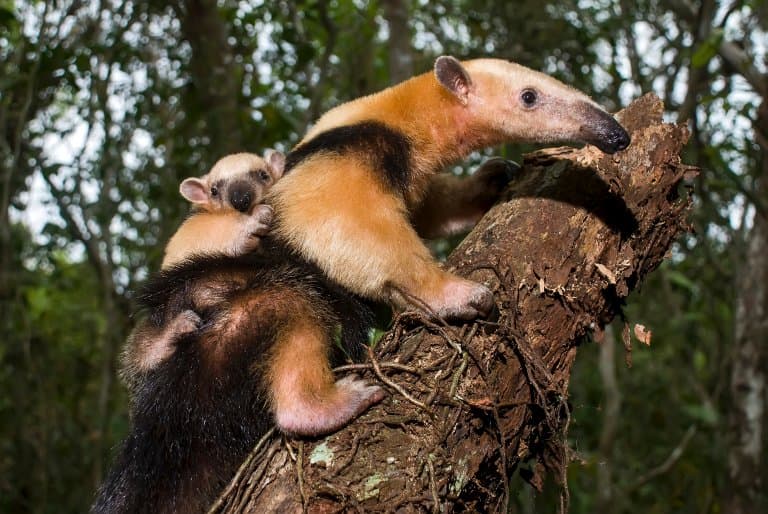
7. They’re mostly threatened by humans
As with many animals, their only concern is us. Predation is rare, though does happen, but the majority of threats come from human expansion into their space.
They’re sold as pets, hunted for meat, hit by cars and struggle with fires and habitat loss. As a popular exhibit, they’re commonly sold illegally to unregistered zoos. 3
8. They make good exhibits
When running a zoo, some of the most important people are the ones who know the least about animal husbandry. Customers cover the expenses of caring for animals, and so it’s important that visitor perceptions are considered in enclosure design.
Studies at Cordoba Zoo in Argentina have shown that lesser anteaters aren’t affected by visitation hours at zoos, making them very suitable as an attraction, as long as their habitats are well planned.
These anteaters need a lot to climb on and soft ground underfoot. They also benefit a lot from enrichment or the use of stimulating objects in their enclosures.
Lesser anteaters have also been used to test visitor perceptions of animal welfare in zoos, and this research has paved the way for new methods of optimal welfare for captive animals.
Zoos need to maintain not only a high level of welfare but also the image of it, regardless of whether this image is accurate or not.
For example, animals housed in enclosures scientifically proven to provide optimal welfare will still be perceived to be mistreated by visitors if the enclosure isn’t natural-looking. Ironically, this can turn off visitors, reducing revenue and jeopardising the welfare of the animals. 4
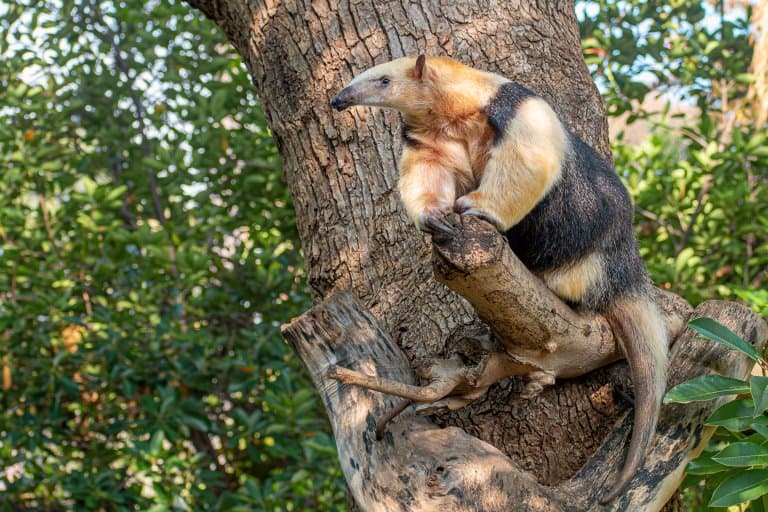
Southern Tamandua Fact-File Summary
Scientific Classification
| Kingdom: | Animalia |
| Phylum: | Chordata |
| Class: | Mammalia |
| Order: | Pilosa |
| Family: | Myrmecophagidae |
| Genus: | Tamandua |
| Species Name: | Tamandua Tetradactyla |
Fact Sources & References
- Virginia Hayssen, “Tamandua tetradactyla (Pilosa: Myrmecophagidae)“, Sci-Hub.
- “Southern Tamandua“, Denver Zoo.
- “Southern Tamandua“, IUCN Red List.
- “Multivariate Analyses of the Activity Pattern and Behavior of the Lesser Anteater on Open and Closed Days at Córdoba Zoo, Argentina“, Taylor & Francis Online.
